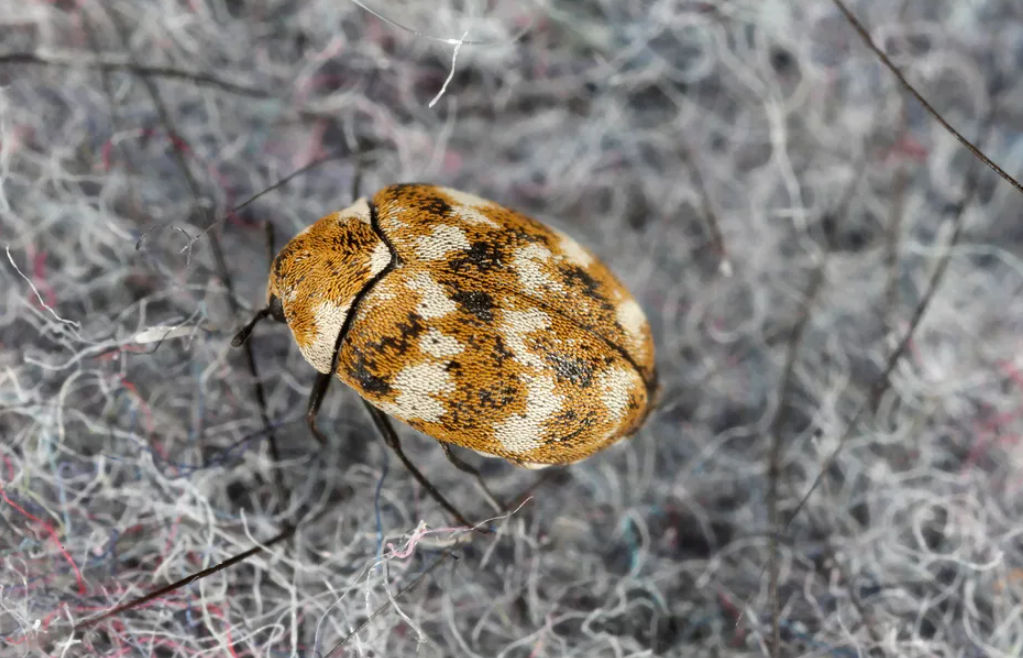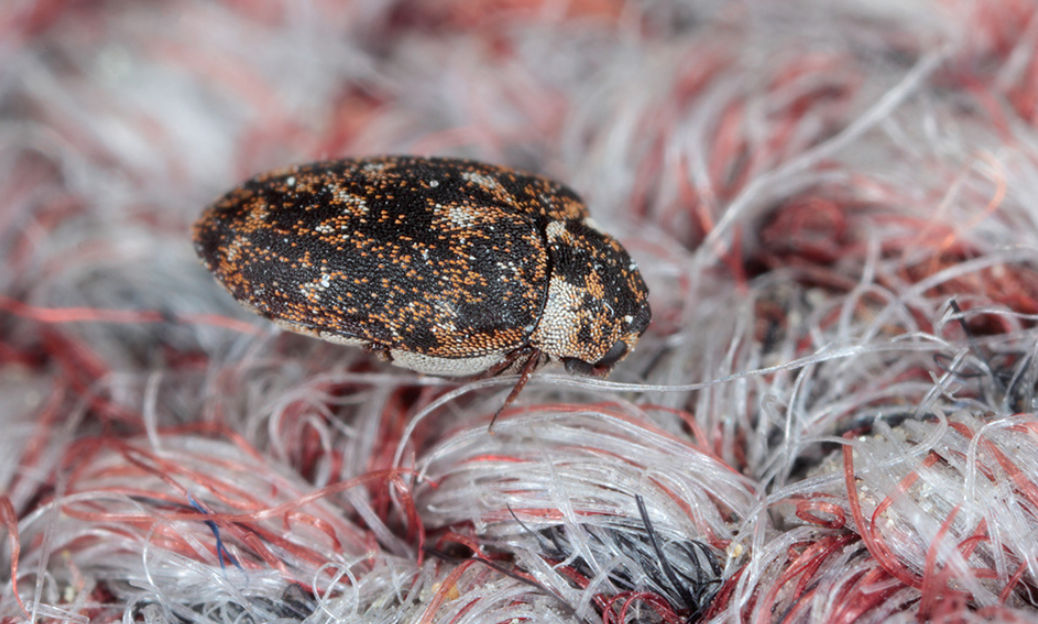How to get rid of carpet beetles
Though they appear as harmless small insects carpet beetles can cause significant destruction inside your home if they are not controlled. These little pests earn their notoriety by damaging carpets, clothing articles, upholstery items and food products stored in your home. Even though carpet beetles do not directly threaten human health they can still cause substantial financial damage along with considerable frustration. This essay presents effective strategies to remove carpet beetles based on personal experience and expert advice to help you retake your home from these unwanted visitors.

Understanding Carpet Beetles
Effective eradication methods require an understanding of what carpet beetles are and the reasons they become problematic. Carpet beetles are members of the Dermestidae family and people often confuse them with bed bugs because their small size and appearance resemble one another. Oval-shaped bodies measure 2–4 mm long while displaying scale patterns in white, brown, and yellow. Common carpet beetle species are the varied carpet beetle along with the black carpet beetle and the furniture carpet beetle.
Natural fibers like wool, silk, fur and feathers draw carpet beetles toward them. These insects consume materials which leads to permanent destruction of carpets as well as clothing and furniture. The larvae of carpet beetles become the main destroyers because they eat these fibers during their development. Adult carpet beetles sustain themselves through pollen and nectar but indoor damage comes mostly from their larvae.
Signs of a Carpet Beetle Infestation
Detecting carpet beetle infestations at an early stage is essential to reduce potential damage. Some common signs include:
Damaged Fabrics: Check carpets, clothing and upholstery for uneven holes as an indicator of damaged fabrics.
Shed Skins: As carpet beetle larvae develop they shed their skins which remain as tiny shell-like fragments.
Fecal Pellets: Near infested areas you will often find these small granular fecal pellets.
Live Beetles or Larvae: The presence of adult beetles together with their hairy larvae is a definitive sign of an infestation.
Ethan Caldwell, as the author of this article and a home management expert, says :
I discovered a carpet beetle infestation when I noticed small holes in my wool sweater that I had not worn for several months. When I examined my closet more closely I found larvae in the corner which led me to act quickly.
Step 1: Thorough Cleaning
To eliminate carpet beetles you need to start with comprehensive cleaning throughout your home. Carpet beetles prosper in dirty environments so keeping your space clean helps prevent and manage these pests.
Vacuum Regularly: Ensure you vacuum carpets, rugs, upholstery and baseboards weekly for effective cleaning. Make sure to clean corners, crevices and underneath furniture because larvae often hide in these areas. A vacuum equipped with a HEPA filter proved very effective in trapping small larvae and eggs.
Wash Fabrics: To eliminate eggs and larvae from fabrics wash your clothing, bedding, and curtains in hot water set to a minimum of 120°F. For delicate items, consider dry cleaning.
Declutter: Tidy up areas in your home by clearing clutter particularly from storage spaces like closets and attics. Beetles find refuge in stacks of clothes and storage boxes that remain untouched.
Step 2: Remove items that show signs of infestation
After cleaning your home you should start identifying which items are infested and remove them. Getting rid of infested possessions can prove difficult since you might need to let go of items you treasure.
Inspect Stored Items: Examine all stored fabrics including clothing and linens for any indications of damage. Dispose of heavily infested items quickly to protect your home from beetle proliferation.
Freeze or Heat Treat: If washing items isn’t possible then put them through a freeze cycle for 72 hours or use a high heat cycle in the dryer to kill carpet beetle larvae and eggs. Freezing and heat treatment both succeed in destroying carpet beetle larvae and eggs.
The vintage wool coat which had belonged to my family for many years was discarded by me. I had to part with the item because keeping it would have allowed the infestation to spread to my other belongings.

Step 3: Use Natural Remedies
For those who want to avoid chemical treatments you can use a variety of natural remedies to both repel and kill carpet beetles.
Diatomaceous Earth: The fine powder known as Diatomaceous Earth originates from fossilized algae which proves safe for humans and pets yet deadly to insect pests. Apply the powder in places where carpet beetles have appeared such as along baseboards and inside closets. The powder works to dehydrate carpet beetle larvae until they die.
Essential Oils: Lavender oil along with eucalyptus and peppermint oil displays properties that drive away carpet beetles. Combine a few drops of oil with water and spray the mixture onto the infested surfaces. This method works well to refresh storage areas and maintain pest control.
Cedar Products: Cedarwood contains natural substances that deter insects. Keep carpet beetles away from your clothes by using cedar balls or cedar blocks and cedar hangers in your closets and drawers.
Step 4: Apply Chemical Treatments
When dealing with severe infestations chemical treatments become necessary. Correct usage of these products requires both safety and responsibility.
Insecticides: Choose insecticides that are marked for use against carpet beetles. Treat cracks and crevices with insecticide but never apply it directly on food-contact surfaces or fabrics.
Boric Acid: Sprinkle boric acid on carpets as an insecticide and vacuum it up after several hours. This chemical works well against larvae but needs careful application in areas with pets and children.
During the application of insecticide spray I ventilated the room and made sure my pets stayed away until the product fully dried. Safety requires following manufacturer’s instructions without exception.
Step 5: Prevent Future Infestations
The best long-term method to prevent carpet beetles from invading spaces is through prevention. Here are some expert tips to safeguard your home:
Store Items Properly: Keep clothing and linens safe from pests by storing them in airtight containers. This prevents beetles from accessing them.
Seal Entry Points: Examine your home for openings near windows, doors, and vents to protect against beetle entry. Close off all entry points to stop beetles from getting inside your home.
Regular Inspections: Inspect your home regularly for signs of carpet beetles with special attention to storage spaces. Detecting carpet beetles early prevents them from developing into a large infestation.
FAQ :
- How do I permanently get rid of carpet beetles?
To permanently eliminate carpet beetles, start by thoroughly cleaning your home, including vacuuming carpets, furniture, and hidden corners. Wash or dry-clean infested fabrics, and seal unused clothing in airtight containers. Use insecticides or natural remedies like diatomaceous earth in affected areas. Regularly inspect and maintain cleanliness to prevent reinfestation. - What do carpet beetles hate the most?
Carpet beetles dislike strong scents such as lavender, eucalyptus, and cedar. They are also repelled by essential oils like peppermint and clove. Keeping your home clean, dry, and free of food sources like pet hair or dead insects can deter them. Regular vacuuming and sunlight exposure also make your home less appealing to them. - What can I spray to get rid of carpet beetles?
You can use insecticide sprays specifically designed for carpet beetles, such as those containing pyrethroids or boric acid. Natural alternatives include sprays made with essential oils like neem oil, peppermint, or tea tree oil. Always follow instructions and test on a small area first. Combine spraying with thorough cleaning for best results. - What is the best deterrent for carpet beetles?
The best deterrent is maintaining a clean and dry environment. Regular vacuuming, sealing cracks, and storing fabrics in airtight containers help. Using natural repellents like cedar chips, lavender sachets, or essential oil sprays can also keep them away. Consistent prevention and early detection are key to avoiding infestations.
Article source:
